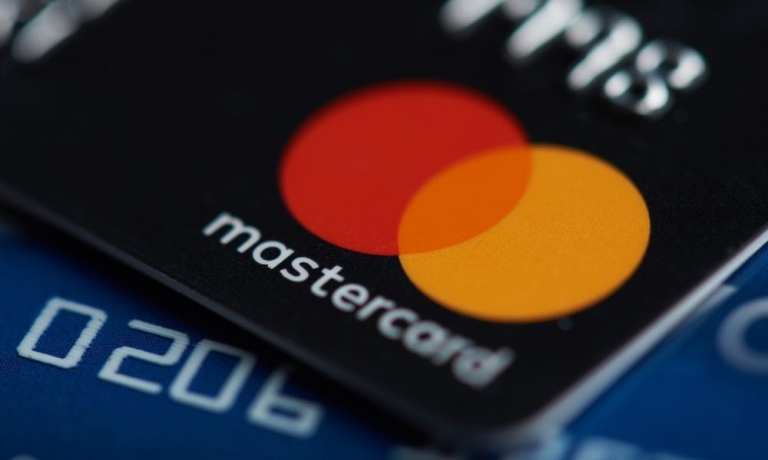
Does the Apple Card signal the age of the ‘digital first’ and…eventually….’digital only’ credit card? Mastercard’s Jorn Lambert, EVP of digital solutions, delves into the mechanics of the card itself, how Mastercard is securing transactions … and why, at least for now, plastic has its place.
Ditch the plastic? Maybe, but not yet — and maybe not for a while.
The world knows by now that Apple has debuted its credit card — the Apple Card — in conjunction with Goldman Sachs and Mastercard. The card is available in both virtual and tangible, plastic forms.
The broad outline is one where the digital version of the card can be used wherever Apple Pay is accepted. The user signs up for the card with their iPhone in the Wallet App — the company said the applicant can get the card within minutes, which is issued straight to the phone.
There is also a physical, titanium card on offer, too, with a notable absence of information that has been a hallmark of plastic cards through the past several decades. That stands as a conscious uncoupling (to borrow a phrase from Gwyneth Paltrow) of personal details that, in the age of data breaches and compromises, may put users at ease when it comes to settling the bill in places where Apple Pay is still not yet an option.
Apple Card is slated to debut this summer. Beyond the headlines that tout no fees, for the daily cash-back rewards (2 percent for purchases tied to the digital card and 1 percent for those made with plastic), the question remains whether this is a game-changer. Perhaps less a game-changer than an acknowledgement that a shift to digital credit cards must have — at least for now — a foot in the tangible world as well?
In an interview with Karen Webster, right on the heels of the Apple Card announcement, Mastercard’s Jorn Lambert, EVP of digital solutions, said there was a time when digital was secondary to plastic and, frankly, optional. Not anymore. As Lambert recounted, consumers are turning to their devices “for just about anything that they do, whether it is for entertainment or for social interactions … and increasingly, also for commerce.”
Indeed, he noted, commerce may take a cue from the evolution of the music industry, where MP3 players, CDs and tapes have given way to streaming and digital-only interactions. “Now, it’s digital-first and, in some cases, digital-only” in music — and perhaps payments will follow that trajectory over time, he said.
Against that backdrop, the goal is to make the key features of the plastic card — the variations of which have been around for 50 years — available across the iPhone, Lambert said.
For Mastercard, said the executive, the first considerations focused on how its cardholders apply for the Apple Card, and how the card gets delivered. The mechanics of that delivery, done through digital channels, will — upon rollout — offer what Lambert termed as a “huge advance” in customer experience, marked as it is by instant gratification.
Addressing Security Concerns
The plastic cardholder once waited days or weeks to get their card via the mail. Now, upon digital application, Mastercard delivers a token to the device, immediately accessible for use.
Lambert also noted to Webster that the physical card is fully enabled, yet marked by only the bare minimum of information required. The PAN number, which can be found on the device, is not printed on the card, nor is the CVC number or expiration date. He said the process uses the power of the device (in this case, the iPhone) to boost the security of the commerce ecosystem through a number of features specific to the device itself, such as FaceID or TouchID.
As for further details of the mechanics tied to security, Lambert said Mastercard tokenizes the credential on the device — via a Mastercard Digital Enablement Service (MDES) API — and generates a cryptogram for every transaction. A number of attributes tie into the cryptogram, such as the amount of the transaction, a secret key and the validation of the aforementioned biometrics. If something is off in that mix of attributes required for verification, such as if a transaction not does come from the right device or have the appropriate biometrics, it will be rejected before it goes to Goldman Sachs.
“Security is top of mind,” he said, adding that a digital card needs to be as secure — if not more so — than its physical equivalent (which sports a chip, but is not contactless).
Spurring Apple Pay Adoption?
Might the Apple Card spur greater use of Apple Pay and the wallet functionality? After all, it’s no secret that Apple Pay has had less-than-stellar adoption, as fewer than one-third of iPhone users have used Apple Pay once or more. Lambert said the cash-back and “financial health” features of the digital offering (which can help users track spending across both the digital and physical cards in a central location) may indeed give rise to greater adoption.
“Now, that doesn’t mean that existing cards that are enabled [and already] on Apple will get [used less] or will be displaced. That’s not the intent,” he said, “nor do I believe that will happen. But certainly, we will see more people adopting digital.”
He added that the near-term embrace of the Apple Card may span both the virtual and physical offerings, and the titanium card will likely prove useful in restaurants or bars where Apple Pay is not currently a payment option. The move from plastic to “digital first” to “digital only” may take several years, said Lambert, but Apple Card’s joint physical and digital card offerings may be what mark a “turning point.”